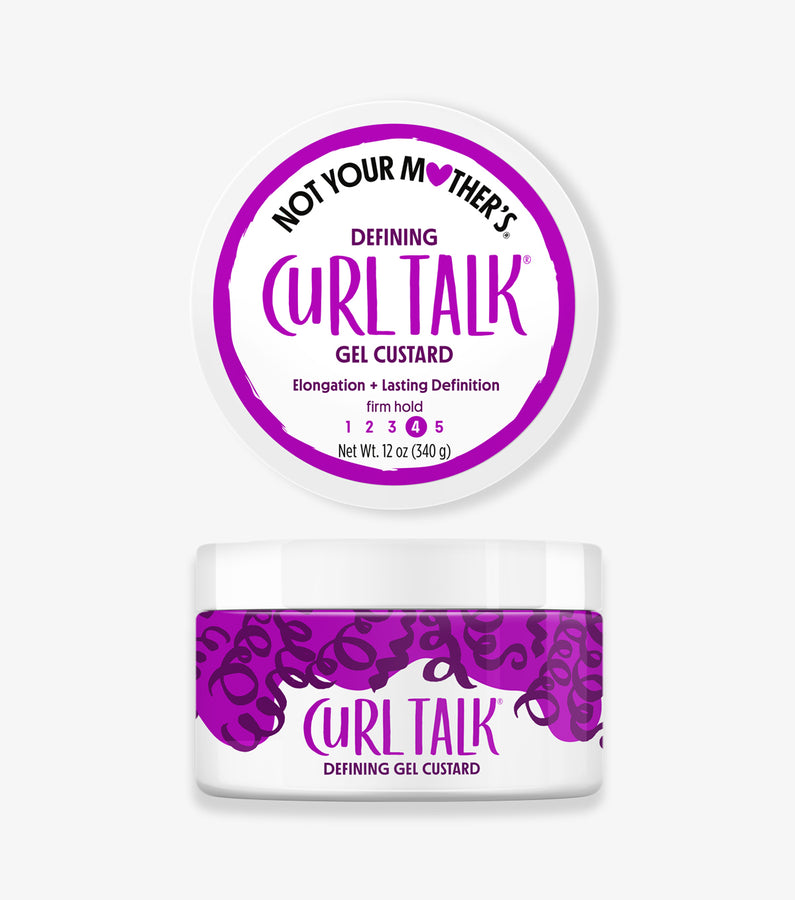
When it comes to curls, not all curl types have been treated equally. In fact, textured curls and coils have long been penalize in society in and out of the workplace, leading to groundbreaking federal and state laws that not only offer legal protection against hair prejudice, but also require education, training and representation for all curl types from behind the chair in salons to behind the scenes of your favorite movie or TV show.
At Not Your Mother’s, our chemists and scientists continue to work towards creating more products that offer curl inclusivity for all curl types. And while we’re experts when it comes to hair, we recognize that you can’t celebrate what you don’t know.
So, if you’re still trying to figure out the best look for your own natural hair, we’ve got you covered. Curl expert Paola Torres of New Jersey’s Utopia Hair and Day Spa shared her best tips on understanding and pampering your curls.
Understand, don’t change your curly hair.
Torres said “curly hair differs from other textures in such a big way.” But for a long time, people didn’t really understand curly hair, “so instead of trying to understand and learn how to handle and maintain their natural hair they decided to either relax their hair or straighten it all the time." In the past few years or so Torres said she’s noticed so many people with “not only the confidence but the motivation to tackle transitioning back to their natural curls.”
Know your curl types. Torres explained that curl types are very easy to find and that the lower the defining letter, A-C, the looser the curls.
- Type 2 hair: 2A, 2B, 2C are looser curls or waves that form a slight S pattern
- Type 3 hair: 3A, 3B, 3C are tight ringlet curls or tighter S shaped curls that get tighter.
- Type 4 hair: 4A, 4B, 4C usually have a more zigzag shape because of how tight they are. Coils might also fit into this category.
You may have giant bouncy curls in one place and tiny corkscrews someplace else. Torres said “it’s also possible to have different type of curls in one head.” Along those lines, curly hair is different on every head of hair. Torres explained that your hair is unique to you and “knowing what your hair needs is key.” Even better, Torres said that with curly hair, you can feel when your hair needs a bit more. “It’s a lot of trial and error to find the products you need to get those curls nice and juicy.”
Know your porosity level. In a nutshell, porosity is your hair’s ability to absorb and hold onto moisture. That’s the reason some curls tend to frizz instead of flow.
There are three levels of porosity.
- High porosity – when your hair absorbs moisture but doesn’t hold onto it.
- Medium porosity – when your hair both absorbs and maintains its moisture level.
- Low porosity – your hair has a hard time absorbing moisture but once it does it manages to hold onto it.
Once you find your porosity level, Torres said to make sure of two things. Use products to help your hair type and take your time styling. “Don’t rush when you’re styling,” Torres said. “This can be time-consuming but if you take the time and really go section by section this will help with defining those curls as well as making sure you aren’t overusing product.”
Up next: Find out more about your porosity.
Consistency is key. Torres said when you find the products and routine that works for you, you should stick to it. Interestingly enough, unlike other hair textures which might need a product switch from time to time, Torres said curly hair will respond best to consistent use of the right products for your hair. “Now that I have a consistent routine I get consistent results,” she added.
Quick styling tips. You can use a hair diffuser – that round blow dryer attachment with fingers – to really play up and define your curls. Work your hair into small sections and then scrunch each section to create defined curls.
- If tools aren’t your thing, after washing and adding product, gently scrunch or roll individual curls to create springy individual curls. You can use Curl Talk Gel Custard to add shine to your hair with deeply moisturizing properties that show off your curl patterns while protecting even the tightest curls. Added benefit - no crunch or residue!
- Curls look fantastic pulled into in ponytails or updos. If you only want to show off a few key curls, wrap your hair in a bun and pull a few out near your temples or ears. We love the way Curl Talk Edge Control protects edges from breakage while keeping your style looking great for hours.
Remember to clarify. Curly hair needs regular deep cleansing. Torres said “A lot of people don’t know how to apply products correctly.” For that reason she thinks it’s crucial to clarify hair and scalp monthly for a clean slate and especially when trying out new products.” Look for sulfate surfactant free, paraben free, and silicone free products to keep curls shiny and clean. Torres added “A clean scalp is a healthy scalp.”
If your hair is a bit sweaty after a workout, or in need of a lift between washes, you’re going to love the way Curl Talk Scalp Mist absorbs oil while neutralizing odor. Simply shake the bottle and spray product evenly onto your scalp – no rinsing necessary. Meanwhile, if you’re in need of a deeper clean after piling on the products, try our Curl Talk™ Scalp Cleansing Oil or Exfoliating Scalp Scrub as a pre-shampoo treatment!



